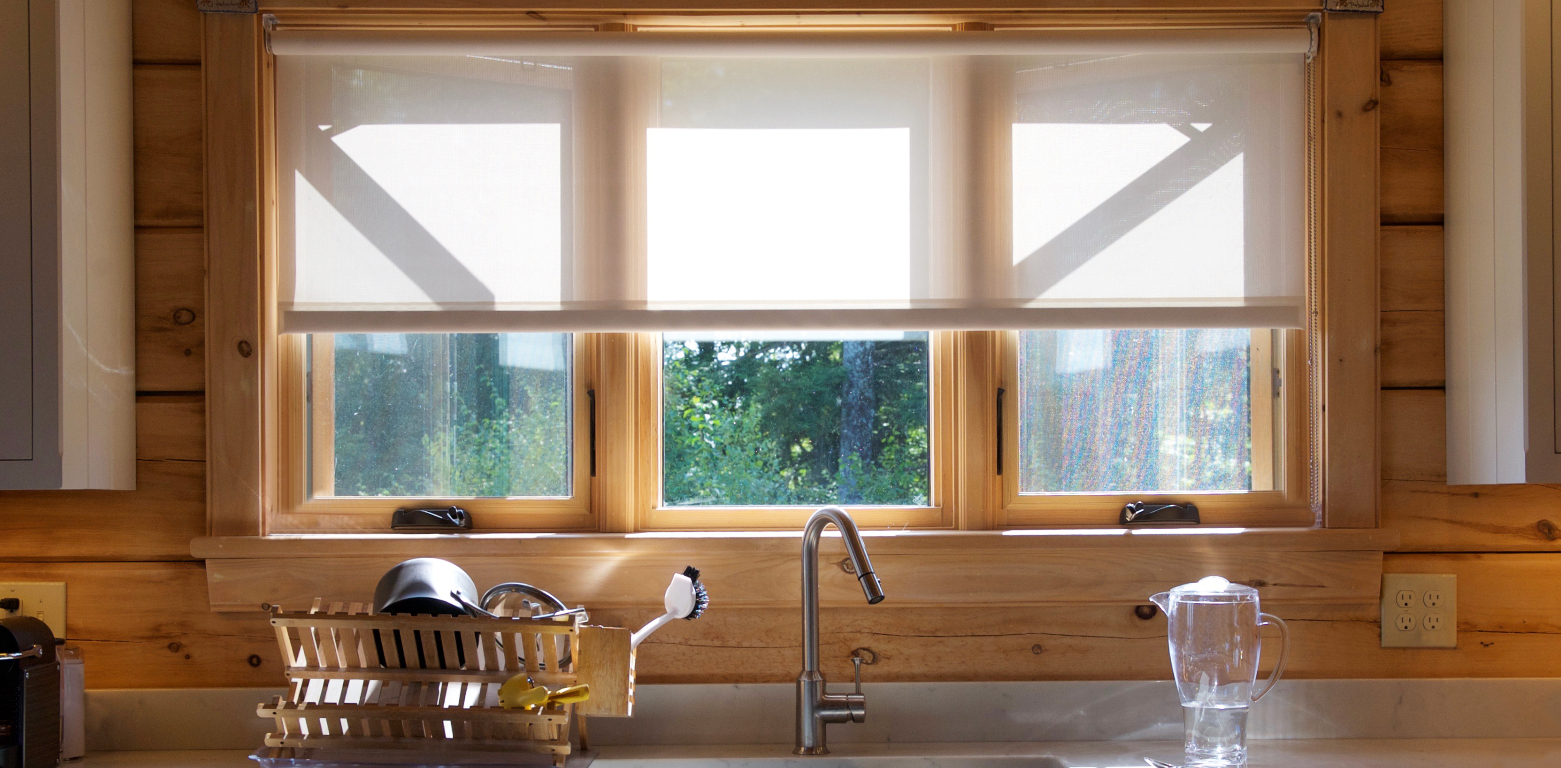The team at EcoSmart loves roller shades for their simple, effective design that can be customized to fit so many different situations.
One of those options for customization is the way in which the shade rolls when it’s pulled down– referred to as roll direction. Today, we’ll be discussing the differences between the two options you can choose from: standard roll direction and reverse roll direction. Let’s dive in.
What is Standard Roll Direction?

Standard roll means the shade fabric rolls down from the back of the roller, staying closer to the window glass. This is the most commonly chosen roll direction—and for good reason. It offers a streamlined, subtle appearance that keeps the roller and hardware discreetly tucked away.
Standard roll also helps reduce light gaps, as the fabric hangs snug against the window frame. This can result in better privacy and improved light control, especially in rooms like bedrooms or offices.
What is Reverse Roll Direction?
With reverse roll, the fabric rolls over the front of the roller, dropping further away from the windowpane. This makes the shade—and any patterns or textures on the fabric—more visible, contributing to a bolder design statement.
Reverse roll is also a functional choice for windows with obstructions like cranks, handles, or shallow frames. It prevents the fabric from brushing against or getting caught on any hardware.
Choosing the Right Option
Deciding between standard and reverse roll comes down to a few key considerations: style, functionality, and your space. To make the best choice, here are some factors to consider:
- Style: Consider the visual impact you want your roller shades to have. If you prefer a cleaner, more streamlined look, standard roll might be the way to go. For those who want their shades to make more of a statement or to highlight a particular pattern or material, reverse roll direction can help accentuate the shade’s presence in the room.
- Functionality: Evaluate obstructions around your windows that could affect your shade’s operation, such as handles, cranks, or deep window sills. Reverse roll might be necessary if such objects would interfere with the standard roll.
- Light Control: Standard rolls tend to be closer to the window, potentially offering better light control and leading to increased privacy. This is because the tighter fit can minimize gaps through which light can enter. Before making the choice between standard and reverse roll direction, consider how important these factors are to you and your space.
- Window Depth: The depth of your window frames can also play a role in your decision. Shallow window frames may not accommodate a standard roll without the fabric touching the glass. In this case, a reverse roll might be a better fit.
We hope that our deep dive helped clarify the difference between standard and reverse roll directions– one of the many ways customers are able to customize their roller shades on our site. With any additional questions about roller shades, be sure to get in touch with one of our team’s shade gurus.
